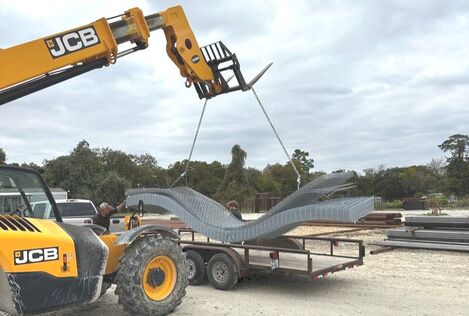|
The global economy is an intricate web of interconnected industries, and one of the vital threads holding it together is steel. From skyscrapers to automobiles, steel is the backbone of modern infrastructure and manufacturing. However, the steel market is not immune to the forces of change, and its current state has far-reaching implications, particularly for small businesses. In this blog, we delve into the present condition of the steel market and examine its reverberations on small enterprises.
The steel market, like many others, is subject to various factors that influence its supply and demand dynamics. These include economic trends, geopolitical tensions, technological advancements, and environmental concerns. As of 2023, the steel industry is undergoing a period of flux, characterized by a delicate balance between these variables. The ongoing disruptions in global supply chains have significantly impacted the steel market. Shortages of raw materials, shipping delays, and labor shortages have led to supply bottlenecks and price fluctuations. Small businesses often lack the resources to absorb sudden increases in material costs, leading to budgetary strains. The call for sustainable practices has permeated the steel industry. Regulations aimed at reducing carbon emissions and promoting green technologies have forced steel producers to invest in cleaner production methods. While this is a positive step towards a more eco-friendly future, the associated costs of transitioning can affect the price of steel, affecting the bottom lines of small businesses. The demand for steel is closely linked to industries such as construction, automotive, and manufacturing. Economic downturns can lead to decreased demand, impacting steel prices. Small businesses operating in these sectors face challenges as they navigate through uncertain market conditions and changing customer preferences. The effects of the evolving steel market are particularly pronounced for small businesses:
While the challenges are real, small businesses can adopt strategies to mitigate the impact of the evolving steel market:
The current state of the steel market is a microcosm of the ever-evolving global economy. Small businesses are undeniably vulnerable to its fluctuations, but they are not powerless. By adopting strategic measures and cultivating resilience, small enterprises can navigate the challenges posed by the steel market's dynamics and continue to thrive in an uncertain landscape. Adapting to change is a hallmark of successful entrepreneurship, and the steel market's current state is another opportunity for small businesses to demonstrate their mettle.
0 Comments
|
AuthorWrite something about yourself. No need to be fancy, just an overview. Archives
July 2024
Categories |
|
Wholesale Steel Hours of Operation:
MONDAY: 8:00am - 5:00pm TUESDAY: 8:00am - 5:00pm WEDNESDAY: 8:00am - 5:00pm THURSDAY: 8:00am - 5:00pm FRIDAY: 8:00am - 4:00pm SATURDAY: BCS 9am-4pm, San Antonio 8am-4pm SUNDAY: CLOSED Available after hours by appointment only. A DIVISION OF MANDU ISLAND, INC COPYRIGHT 2021 WHOLESALE STEEL BCS, LLC PRIVACY POLICY |
|

 RSS Feed
RSS Feed